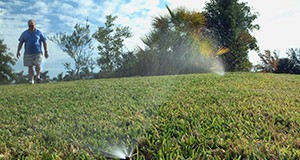Resumen
Approximately 50% of Floridians’ daily water consumption is used for outdoor purposes, such as landscape irrigation; this is 20% higher than the national average. In order to alleviate the pressure on the precious water resources in Florida from various demands, increased public awareness and engagement in water conservation is needed especially among high water users. This 4-page fact sheet is the second in a series discussing how Extension can improve high water users’ engagement in water conservation with a focus on high water users’ water-related behavior and willingness to act. Written by Pei-wen Huang and Alexa J. Lamm, and published by the Department of Agricultural Education and Communication, July 2016.
Citas
Huang, P., Lamm, A. J., & Dukes, M. (2016). Informing extension program development through audience segmentation: Targeting high water users. Journal of Agricultural Education, 57(2), 60-74. doi: 10.5032/jae.2016.02060 https://doi.org/10.5032/jae.2016.02060
Kotler, P., & Roberto, E. L. (1989). Social marketing. Strategies for changing public behavior. New York, NY: The Free Press.
Monaghan, P., Ott, E., Wilber, W., Gouldthorpe, J., & Racevskis, L. (2013). Defining audience segments for extension programming using reported water conservation practices, Journal of Extension 51(6). Retrieved from http://www.joe.org/joe/2013december/a8.php
South Florida Water Management District. (2008). Water conservation: A comprehensive program for South Florida. Retrieved from http://www.sfwmd.gov/portal/page/portal/xrepository/sfwmd_repository_pdf/waterconservationplan.pdf
Trenholm, L. E., Unruh, J. B., & Cisar, J. L. (2013). Watering your Florida lawn. ENH9. Gainesville: University of Florida Institute of Food and Agricultural Sciences. Retrieved from http://edis.ifas.ufl.edu/lh025 https://doi.org/10.32473/edis-lh025-2013
United States Environmental Protection Agency. (2016). Water use today. Retrieved from http://www.epa.gov/watersense/our_water/water_use_today.html

